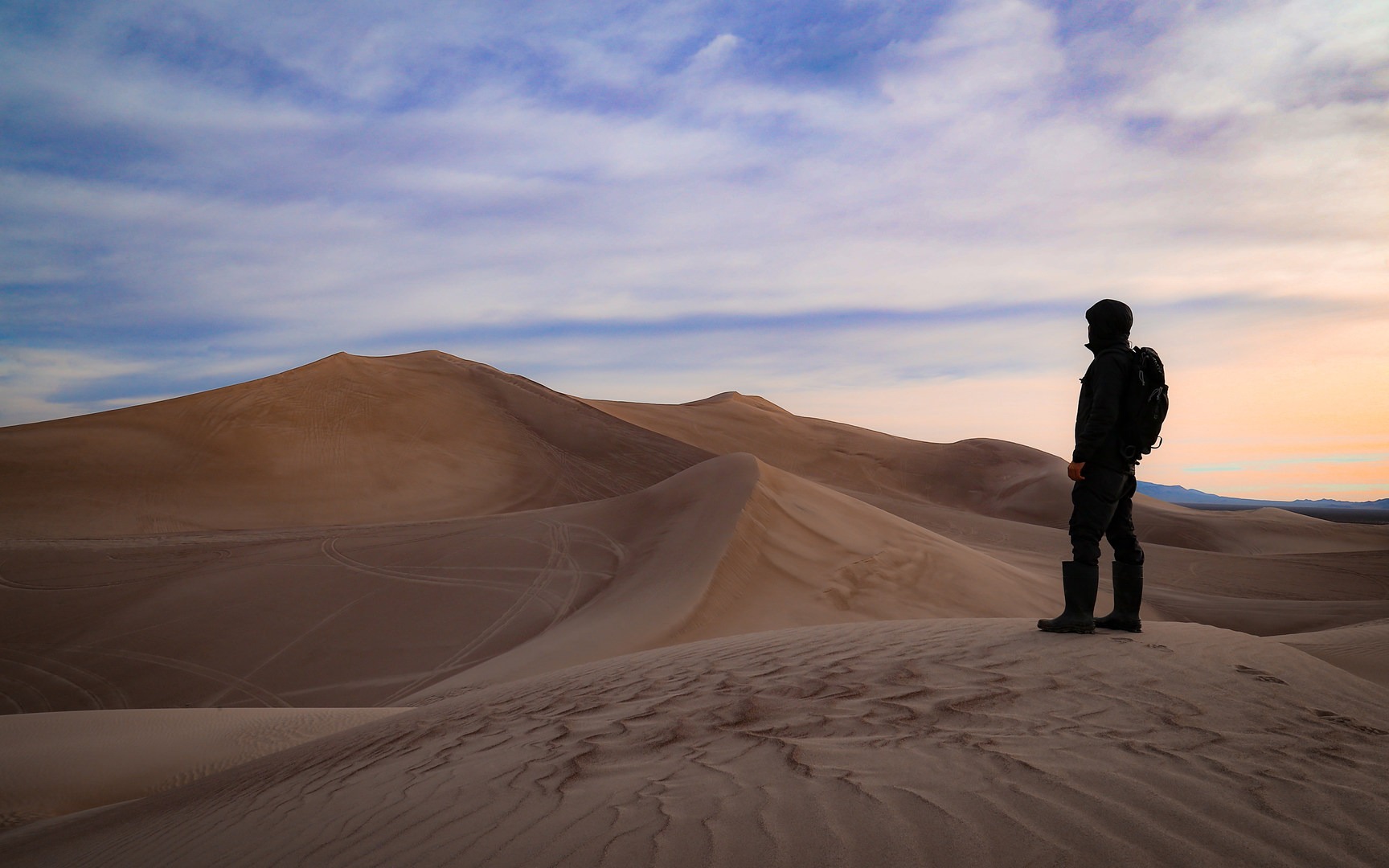You are here
The Amargosa Dunes, also called Big Dune, are a star dune complex lying about 100 miles north of Las Vegas in the arid Amargosa Valley.
Much like the desert itself, the appeal of the dunes is much more subtle than other types of outdoor locales. While its distant location and extremely slow traversing ensure that no visit to the site comes without putting in some effort, the rewards can be ethereal.
The Amargosa Dunes were formed over time when wind would blow excess dirt from a bend in the Amargosa River - a river that continues to make its way from Nevada to the Death Valley basin. This dirt remains mostly hidden underground except after wet periods. Referred to as a migrating dune field, the shape of the dunes - occupying about 5 square miles - continues to move and change, with the tallest of the dunes standing generally between 300 and 500 feet.
The Amargosa Dunes also possess the qualities needed to make a sound under certain wind conditions, often called 'singing dunes' or 'booming dunes', a quality shared by nearby Dumont Dunes, Kelso Sand Dunes and Eureka Sand Dunes, each located in California.
Its location along the desert river has traditionally made it a sacred place to Southern Paiute and Numic speaking peoples, whose stories tell of the different migrating and singing dunes throughout the California and Nevada regions being fluid and communicative creatures.
The Amargosa Dunes are also home to four species of sensitive species of beetles, among which is the threatened Big Dune Beetle. The critically sensitive population of and exclusive habitat for this beetle have led the BLM to designate a portion of the dunes as an Area of Critical Environmental Concern.
One significant detail about the dune area is its use by ORVs. With the exception of the protected area and rules against riding over vegetation, ORVs have free reign of the dunes, making it potentially dangerous for hikers and other visitors. Though the dunes tend to see a lot fewer ORVs than other non-protected dune areas, the Amargosa dunes can get busy and noisy with ORV riders, particularly on weekends. Visitors should be acutely aware of this and take all safety precautions. Visiting during early morning hours and on weekdays can reduce the potential number of drivers on the dunes.
The nearest amenities of any kind are about 10 miles south on Highway 95 at Amargosa Valley junction, or 20 miles north in the town of Beatty.
Camping is permitted surrounding the base of the dune.
Depending on conditions, two-wheel drive vehicles should be able to make it relatively close to the dunes; however, wet conditions as well as shifting soft sand can easily cause cars to get stuck, so those without large four-wheel drive vehicles should follow existing roads and be careful about getting out and checking if there is any uncertainty about traction.
Logistics + Planning
Current Weather: Powered by Dark Sky






























Comments
Sign In and share them.